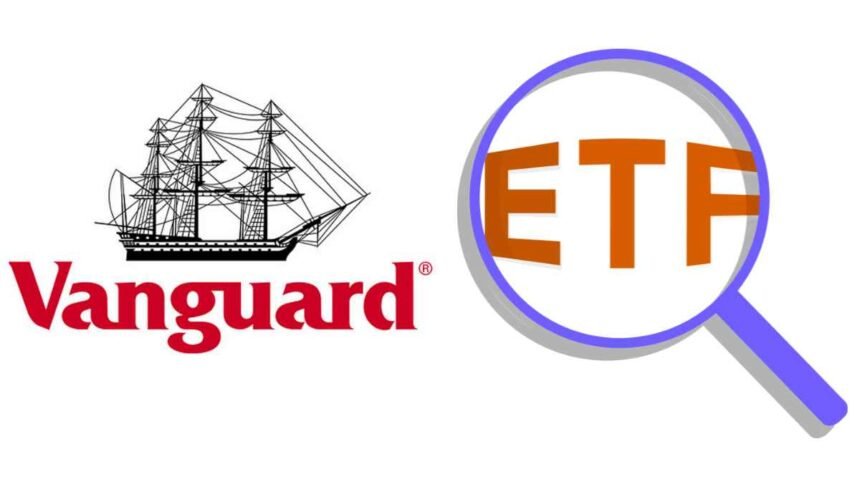On Thursday, investing behemoth Vanguard introduced two new actively-managed bond ETFs to simplify access to diverse fixed income portfolios across sectors, credit ratings, and maturities. Vanguard is famous for its low-cost index funds and ETFs.
Both the Vanguard Core Bond ETF (VCRB) and the Vanguard Core-Plus Bond ETF (VPLS) take advantage of the company’s extensive experience in fixed income management to create bond portfolios that are both comprehensive and easy to invest in.
Although Vanguard’s core bond and core-plus bond mutual funds are already actively managed, the newly issued exchange-traded funds (ETFs) offer unique strategies that are more in line with the company’s mostly index-based ETF offerings.
Flexible, Diversified Bond Exposure Through a Single Fund
In a statement unveiling the new exchange-traded funds (ETFs), Sara Devereux, global head of fixed income at Vanguard, highlighted the ease of these products for investors looking to diversify their bond market exposure:
“The new ETFs offer investors diversified single-fund fixed income portfolios offering exposure to a range of sectors, qualities and maturities across the global investment-grade bond universe.”
A diversified, professionally managed allocation across different geographies, credit quality, durations, and bond market segments is provided by VPLS and VCRB in a single fund, eliminating the need to piece together a number of other bond funds to construct a portfolio.
This streamlined method, says Devereux, can simplify fixed income investing, which she admits “can be complex and time consuming.” By carefully constructing their portfolios to tap into various sectors of the bond markets, the new ETFs hope to alleviate this friction.
VPLS: Flexibility Across Investment Grade Fixed Income
With the Vanguard Core-Plus Bond ETF (VPLS), investors can gain exposure to investment-grade bonds issued by the United States while also having the freedom to adjust their holdings in other global fixed-income markets in response to market fluctuations.
With this flexibility, the fund’s managers can modify exposures according to their fundamental and valuation analysis, potentially overweight or underweight specific sectors. When sectors like U.S. high yield corporates and debt from emerging nations start to look appealing, VPLS may start to prioritize these investments.
Investors can expect a total return from income and price appreciation across the whole bond market with this dynamic allocation, which primarily targets higher-quality investment grade assets.
VCRB: Modest Ventures Beyond Core Fixed Income
On the other hand, VCRB, or the Vanguard Core Bond ETF, sticks to its core strategy of investing in investment-grade bonds issued by the United States and makes small excursions into other areas of the international fixed-income market.
Similar to its sibling fund VPLS, VCRB provides investors with low-cost, professionally-managed diversification across various bond segments, maturities, credit quality, and durations. On the other hand, Core Bond ETF investments are limited to investment-grade domestic bonds.
Expansion into less central areas, such as high yield bonds and developing market debt, is substantially constrained in comparison to VPLS. Investors who want to limit their exposure to non-core domestic investment grade bonds can benefit from VCRB’s lower risk profile compared to Core-Plus.
Actively Managed by Seasoned Fixed Income Team
The VPLS and VCRB teams rely on Vanguard’s tried-and-true actively-managed fixed-income strategies.
Portfolio managers such as Daniel Shaykevich (VPLS) and Samuel C. Martinez (VCRB) are primarily responsible for overseeing the funds, while the firm’s Fixed Income Group collaborates on this task.
With a combined 35 years of experience at Vanguard, Shaykevich and Martinez head the teams responsible for actively managing taxable bond funds. They draw on the firm’s long history of developing expertise in fixed income analysis and portfolio management.
Lower Expenses Than Category Peers
Devereux argues that the benefits of both new ETFs, which are in line with Vanguard’s general goal of reducing fund expenses for investors, can add up over extended periods of time because their expense ratios are lower than average for their respective categories.
According to Vanguard’s calculations, the average expense ratio for core-plus bond category funds is 0.75%, significantly higher than VPLS’s 0.20%. In contrast to the average expense ratio of 0.58% for funds in the core bond Morningstar category, VCRB’s ratio is 0.10%.
With a 30-year investment horizon, an investment of $10,000 yielding 6% per year would incur $7,600 less in fees due to the 0.55% expense gap between VPLS and its typical competitor. Compared to the average core bond fund rival, VCRB saves more than $4,500 in expenses.
No investment decision should be driven solely by expenses, but Vanguard’s efforts to minimize fund costs can have a significant impact on long-term performance. According to Devereux “lower costs allow more of a portfolio’s return to flow through to investors.”
Simplify Bond Investing Through Single Funds
New exchange-traded funds (ETFs) from Vanguard combine strategic exposure to fixed income across sectors into one easy-to-manage investment. This eliminates the need to assemble a number of specialized funds in order to construct diversified bond portfolios.
Through consolidating access to a globally diversified selection of bonds, the funds seek to simplify fixed income investing for appropriate investors. They do this by using seasoned active management that is entrenched in Vanguard’s fixed income tradition.
With VPLS and VCRB, investors can get comprehensive bond exposure at a reasonable cost while still supporting Vanguard’s mission to reduce investor expenses through low expense ratios.





